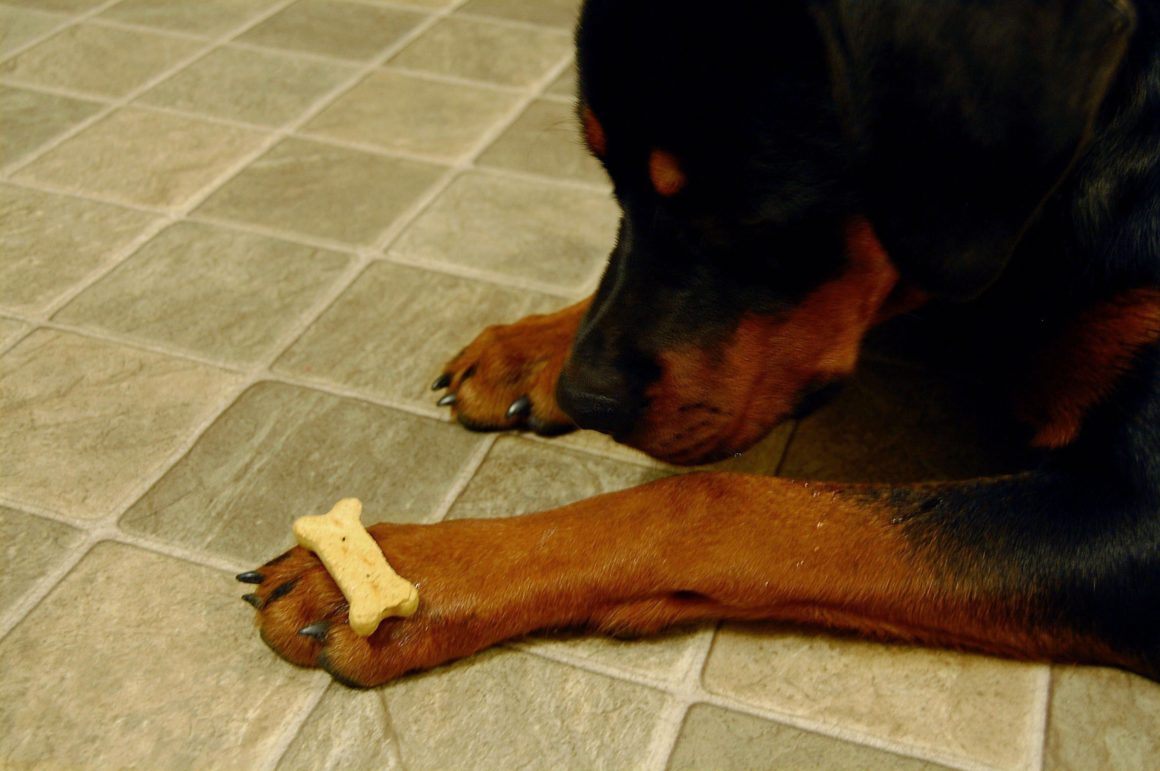
How to Teach a Dog to Leave It
By Sherry Woodard, Best Friends animal behavior consultant
Like “stay,” “leave it” is a cue that may prevent your dog from being injured and may even save his life. “Leave it” should be taught to all dogs and practiced frequently. Hazards that you want your dog to leave alone include antifreeze in a puddle; sharp bones, broken glass or any other dangerous trash on the ground; and even a dog squabble at the dog park. Your dog responding to the cue “leave it” can be the difference between you giving quick praise or heading to an emergency vet clinic.
Teaching a dog ‘leave it’
Teaching “leave it” is not difficult. Begin the lessons inside your home or in an area with very few distractions. Here are the steps for teaching “leave it”:
- Make sure you have two different types of treats. One type can be fairly boring to the dog, but the other type should be a high-value treat that he finds pretty delicious. You will also want to make sure that the treats are broken up into pea-sized pieces so it won’t take him too long to eat them.
- Put one type of treat in each hand. If you like to train with a clicker as your marker, you can also hold a clicker in the same hand that holds the high-value treat. Then, place both of your hands behind your back.
- Make a fist with the hand that is holding the treat of lower value and present your fist to your dog, letting him sniff.
- Say “leave it” and wait until he finishes sniffing your fist.
- As soon as your dog is done sniffing, you can either click with the clicker or say “yes.” Then offer him the higher-value treat in your other hand.
- Repeat until your dog immediately stops sniffing your hand when you say “leave it.”
- When you say “leave it” and he stops sniffing right away, leash your dog and then toss a low-value treat outside of his reach.
- Wait until he stops sniffing and pulling toward the treat. As soon as he does, either say “yes” or click and then give him a high-value treat from your hand. Practice this exercise a number of times.
Over time, by practicing “leave it,” your dog should stop pulling as soon as you give the cue. When rewarding him with a treat, make sure that it is something good, not plain old kibble. By doing so, you are teaching him that asking him to leave some food doesn’t mean he won’t get anything, but that in fact he might get something even more delicious.
When your dog is reliably responding to the cue, you can teach him that “leave it” can apply to other things as well, not just food on the floor. Repeat the exercise with five different items that are fairly boring to your dog.
After using five different “boring” items, start using slightly more exciting items. You know your dog, so you alone know what items he would consider more interesting, but don’t jump to high-value items right away. To increase his chances of success at learning the cue, you want to work up to high-value items gradually. If Kleenex or a piece of plastic, for instance, would attract your dog on a walk, don’t start with those. Choose the items based on your ultimate goal: Anytime you say “leave it,” you want to be confident that your dog will indeed leave whatever you are asking him to leave. .
The reward he receives when he leaves an item can change as well. If your dog has a favorite toy, squeak it and play for a moment when he comes running to you after leaving the other item of interest. Most dogs love interacting with us, so a moment of praise or play with a toy can be just as effective as a treat.
Keep it fun
Even though you’re practicing “leave it” as a way to keep your dog safe, you want him to see it as a fun game you play. When your dog is proficient at the game in your home, start practicing in a variety of locations with more distractions.



Leave a Reply